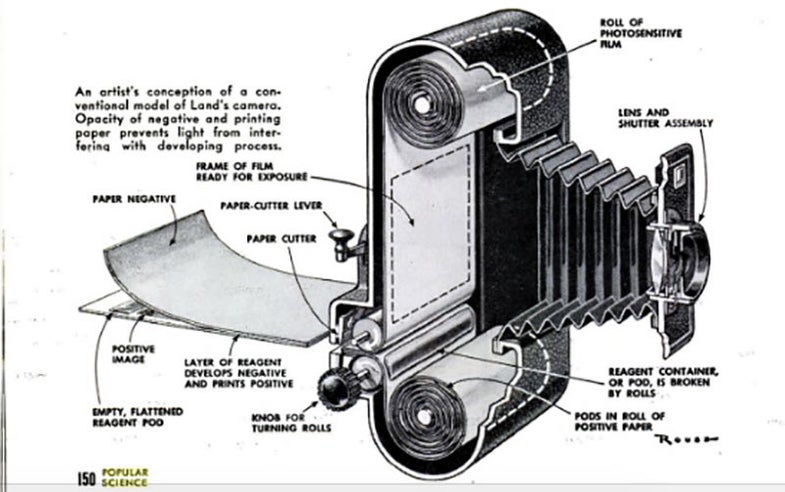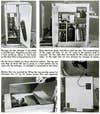#TBT to 1947: Introducing the Polaroid Camera, a darkroom in a box, and DIY shadow backgrounds for moody portraits
Vintage photo news from Popular Science's May 1947 issue.

Today we’re taking you way back to 1947 for some photographic wisdom from our friend’s at Popular Science. Happy Throwback Thursday!
The world meets the Polaroid:
Edwin H. Land unveiled the world’s first instant camera in 1947, which he called the Land camera. The camera spit out black-and-white prints in 60 seconds. What’s more: light was not required for printing. Here’s what Popular Science had to say about it:
The darkroom for the photographer short on space:

A product that New York City apartment dwellers of today would certainly appreciate—Walter O. Englund’s Darkroom in a Box was a plywood cabinet that measured 19 inches x 26 inches x 33 inches. It had an allocated slot for every chemical and piece of equipment needed to develop prints. Think of it as a predecessor to the storage solutions found at The Container Store.
I can think of a few film enthusiasts that would benefit from a product like this today.
Interesting shadow backgrounds for the home studio:

Plain white backgrounds are boring. Add some drama to a simple portrait by casting shadows with a homemade “cookie” (not the kind that you eat, but one that you use for casting shadows or silhouettes to produce patterned illumination). This DIY project is simple: all you need a lighting source, some black paper or thin cardboard, and scissors.
Once you have your pattern cut, suspend it in front of your light source at approximately a 45-degree angle so that you subject can pose in front of it. Finally, make sure to keep the lighting on the background dim, as not to blow out the shadow pattern on the wall.
